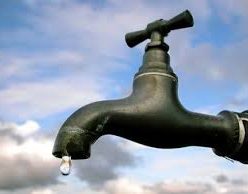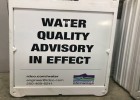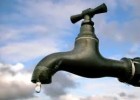Water System for North Westside

Water is again (still) the topic that effects us all right where we live. The North Westside has six water systems three Public Systems – (Killiney, Westshores and Valley of the Sun/Upper Fintry) and three Private Systems (La Casa, Fintry Delta and Estamont). All with the exception of Valley of the Sun (ground water from a well) are surface water systems fed from Okanagan Lake and therefore subject to very stringent Interior Health Filtration Standards and Regulations that we do not currently meet. The Public Systems operated by RDCO in Killiney and Westshores have been getting deferments to the filtration standards looking for a path forward that is affordable to the resident users of these systems.
In the larger municipalities centralized filtration is the method most prevalent but it is extremely costly both in infrastructure and manpower. Most municipalities and their infrastructure grow with population which allows them to address these regulatory and infrastructure costs that are in the millions of dollars. In a rural area such as the North Westside composed of several small water systems of 50-500 homes serviced individually for water with no future growth beyond the existing boundaries due to terrain and distance. No future growth means no continual increase to the rate base that pays for the service which equates to higher and higher fees for the limited rate payers to pay for. We have one small public system with a rate around $6,000 annually per home and that is without meeting IH filtration standard!
Over the last ten years I have watched deferments used to buy (emphasis on buy, the Studies used to justify the deferments are very costly) time looking for an affordable solution to meet Interior Health’s filtration regulations with no real cost effective solution as yet. Centralized filtration for medium and large water systems have a more affordable cost because they are in a system that serves hundreds of thousands or hundreds of connections bring the price down. Yet I hear many complaints from the local mayors and councilors about how much their residents pay for water yet we rural users are paying much more in most cases. While this argument goes on our water systems existing infrastructure gets older and needs attention. For this reason money raised for asset renewal should only be used for actually renewing the asset. If filtration takes all our renewal money where does the money for that come from. We could end up with a state of the art centralized filtration and no infrastructure to deliver it to the homes.
In an attempt to find a solution the RDCO explored a pipeline concept off of the Valley of the Sun/Upper Fintry water system as it is ground water from a well in Fintry Delta. Ground water is not currently subject to IA Filtration regulations as it comes from an aquifer not a surface stream or lake. In an update the price went up ten million dollars and the prices being quoted are at best “place holder” numbers and have little meaning in the real world where pipelines are constructed. This project will be coming to this Thursdays Board Meeting for information but there are Budgetary implications that need to be explained. The meeting will be live streamed on the RDCO web site. It will be an interesting conversation but… I am concerned that this project has gone beyond affordable for us as a community.
Prior to exploring the pipeline but after considering centralized filtration I was looking into what’s called Point of Entry (POE) which sees the water filtration on the home itself. It is an IH standard for filtration but very limited in scope with dated regulations that have fallen behind technology. The upside is it is cost effective, many residents already operate a reverse osmosis system for their potable water. SMALL WATER SYSTEM
GUIDEBOOK offers more information on the legislation. Should the regulations be updated we could implement this for a fraction of the costs of either the pipeline or centralized filtration. The down side from IH perspective is that there will be potable water taps and non potable taps and water usage. People in the third world know what tap or water source to drink from I think we can manage.
I have spoken with several Electoral Area Directors on water systems and am not surprised that it is a topic of major concern for rural and small community water utilities. The advantage to POE is it would work for both the private and public water systems to communities that do not currently or foreseeably have the population to pay for the big city centralized filtration. We don’t and won’t have the populations necessary to pay for these hugely expensive white elephants. I have started the following up on this through SILGA (Southern Interior Local Government Association) and it will be a topic at the Electoral Directors Forum in February and hopefully to UBCM (Union of BC Municipalities) where we can lobby the Provincial Government on behalf of the Small Communities and Electoral Areas. I have also spoken with fellow Board Members from the Okanagan Basin Water Board for help and support moving forward with POE regulations that allow us to take advantage of the technological advances pertaining to POE systems.

